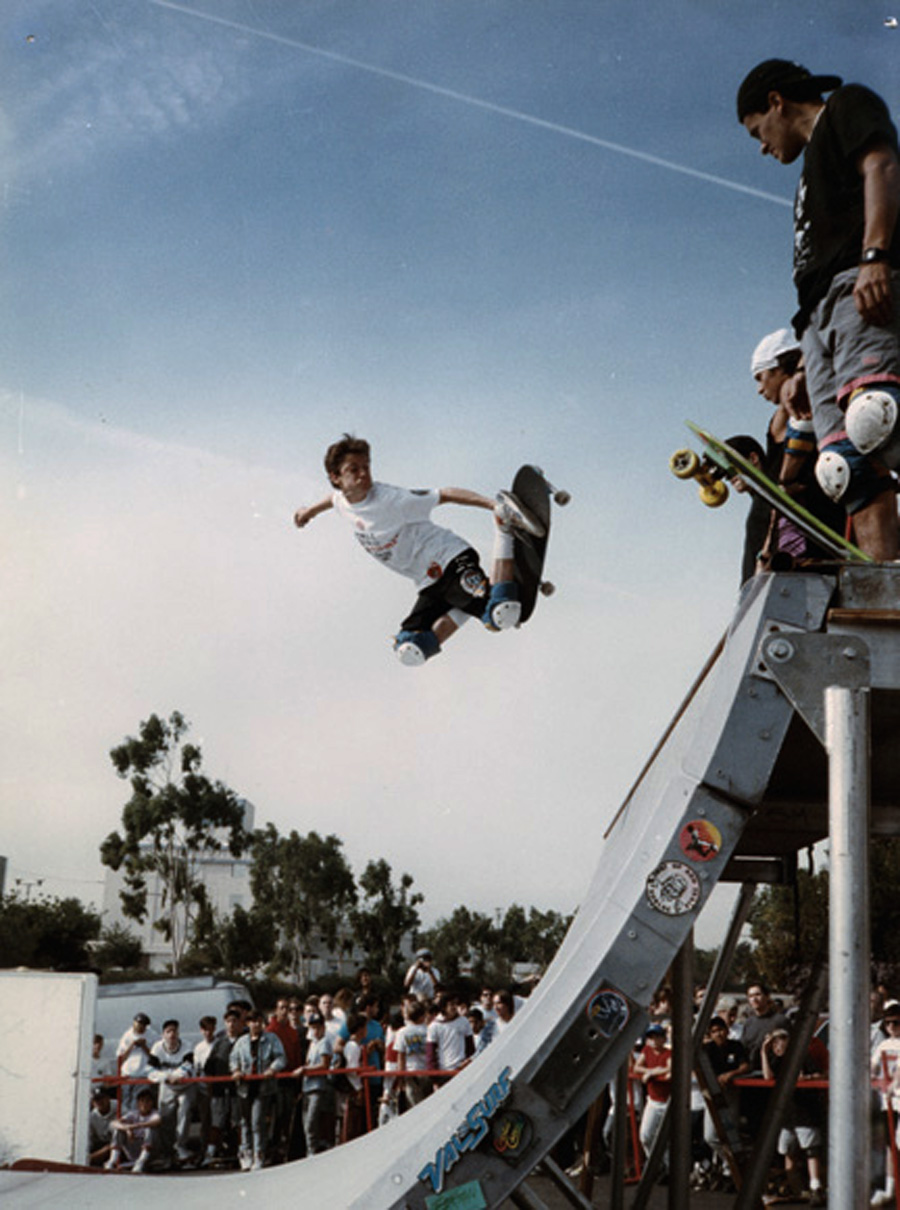
Chapter 14
Mackenzie Skatezone
"Skateboarding is not a crime," read the bumper stickers. As the popularity of the sport grew, more and more property owners, schools and businesses were putting up signs prohibiting it. The Company was increasingly promoting a public skatepark in some form, somewhere in the company's home turf. We could see all the signs that said "skateboarding prohibited." How about some signs that said "Skate Zone", signs designating a place where skating is permitted? Encouraged, even.
The powers that be at Powell; George, Chris and Fitz probably, came up with the idea of a "Skate Zone" Demo. By then we had quite a bit of collective experience putting on public shows across the country with our mobile ramp as the centerpiece. Invariably, in every town we appeared on some big parking lot, the locals would transport their portable launch ramps down to the scene and a momentary skatepark would exist for that one afternoon.
Here in our own hometown, the Company could provide our own collection of skating elements, and the R&D/Facilities crew got to work creating them. This is the point where our rampbuilding took off. Up to that point, our work on the Crossbones Ramp had been mostly a volunteer effort. With Powell putting on its own local event, all the resources of Facilities and R&D were used on company time. Mike Frazier's welding skills gave us perfect coping; the company paid for all the materials, and we had a full gallery of pieces to build.
MacKenzie Park sits up against a hillside on upper State Street. It was part of the site of a WWII temporary hospital they made into a park when I was in high school. It has a big grassy field, a couple of baseball diamonds, basketball courts and a big parking lot surrounding the Army Reserve Recruiting Station on the corner. Everything we needed for a deluxe event.
We set up the mobile halfpipe on the lawn. In the paved basketball courts we scattered an array of launch ramps and sections of the railslide from the Ver-Cal event, and a freestanding two-sided wall ride that turned out to be the most popular element. A steep hillside on the south edge of the park made for excellent viewing of the whole spectacle. Stars of the Southern California skate scene who were pros for other companies showed up to support the cause; including skateboarding' s own DJ, Skatemaster Tate.
Thousands of skaters and curious pedestrians spent the whole afternoon there, enjoying the free form spectacle. By early evening we had to remove all the skating elements.
With the temporary skatepark torn down and hauled away, many skaters moved on to the nearby Laredo Plaza parking lot and did cause some problems. That's just the point, without a zone for it; skaters practice their sport on the world at large.
The MacKenzie Park SkateZone was a big success; proving skateboarding events are not anarchists' riots, just young athletes having some fun. The city fathers were starting to see the light. Fitzpatrick was making sure that in the halls of government, and in municipal parks departments statewide nobody would miss the calculation: a basketball court, for example, might entertain a few people, maybe 10 at once, but most of the time there' s nobody there. A baseball diamond, with all its need for maintenance and grass mowing, likewise sits most of the time unused. But a skatepark is used almost constantly.

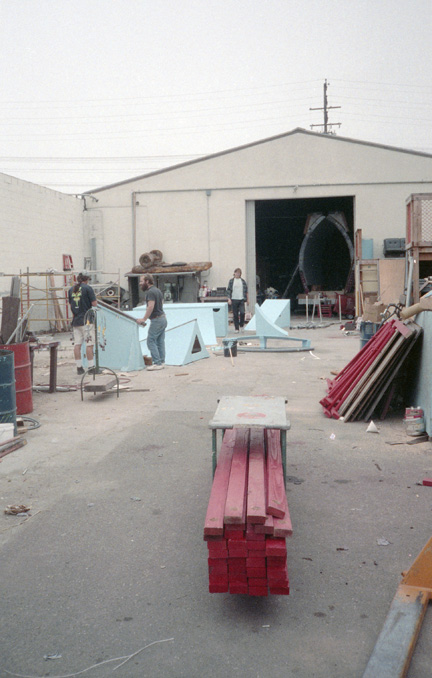
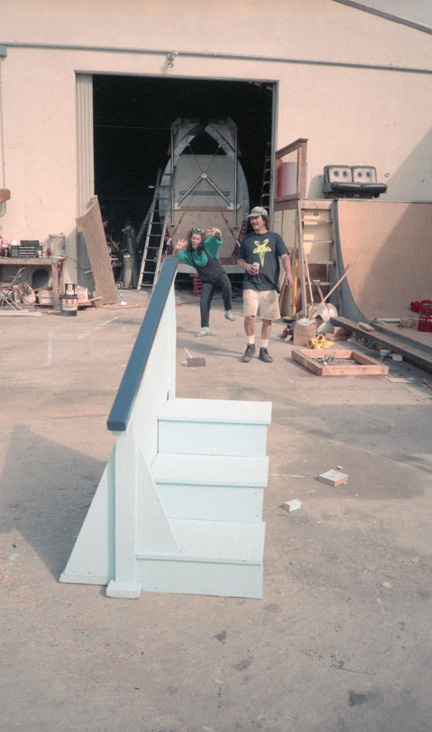
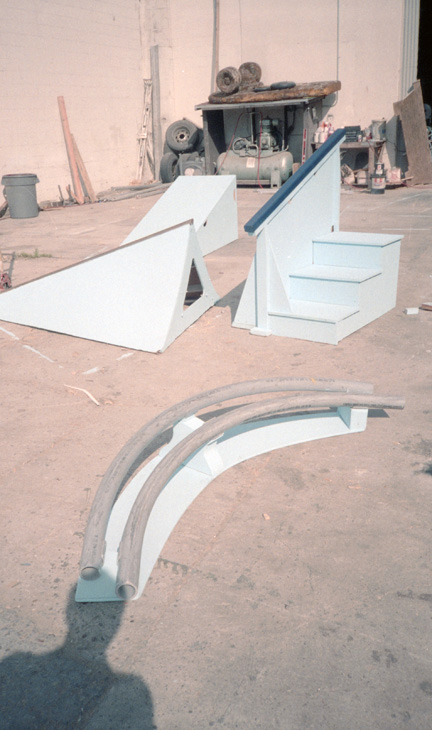
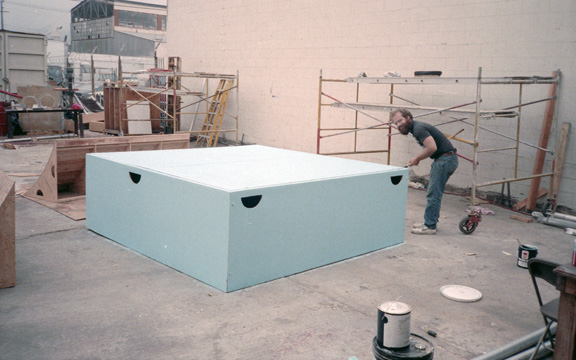
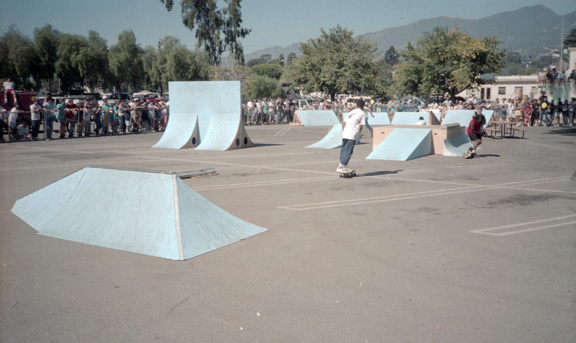
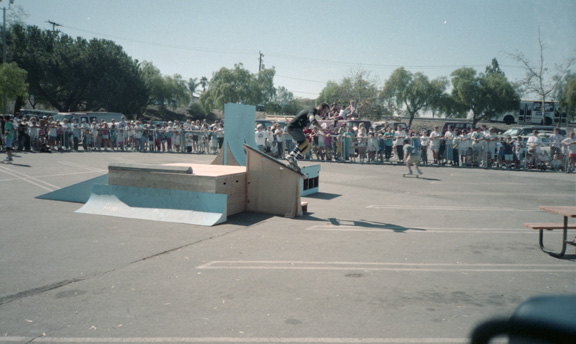
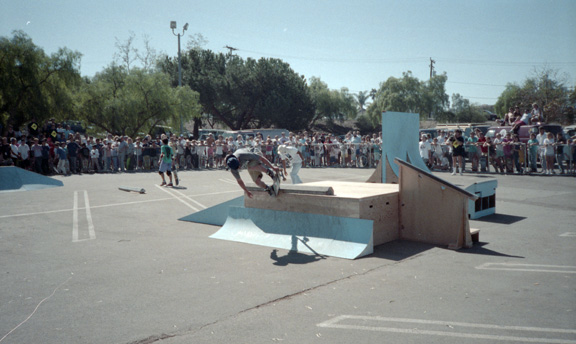
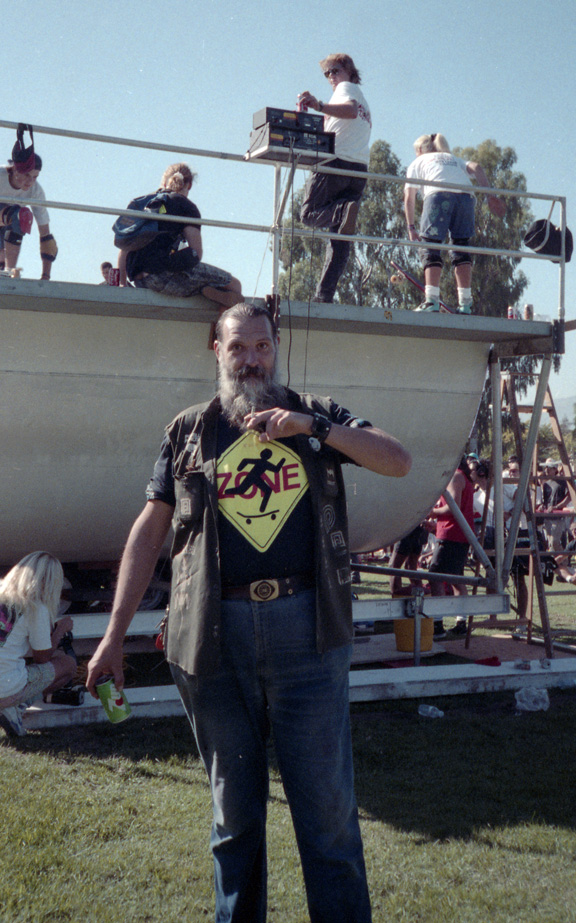
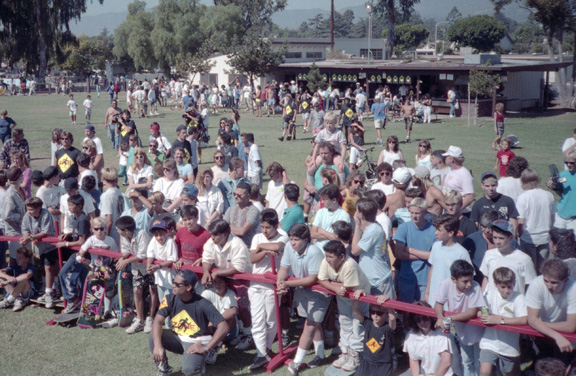
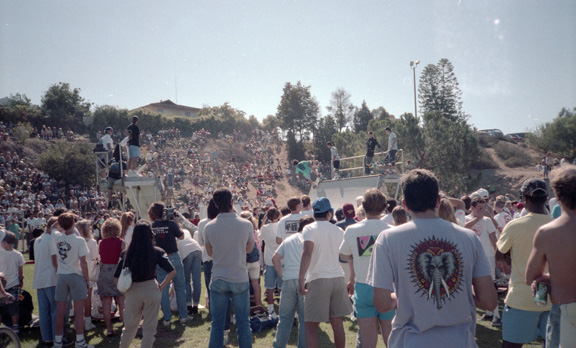
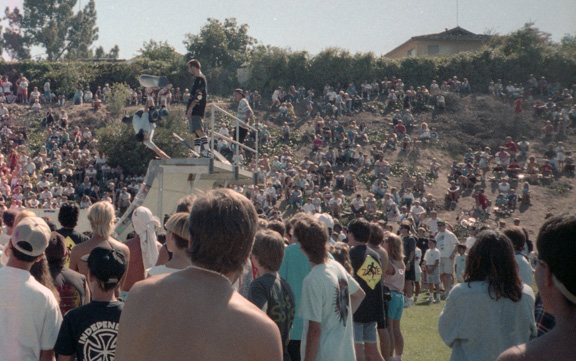
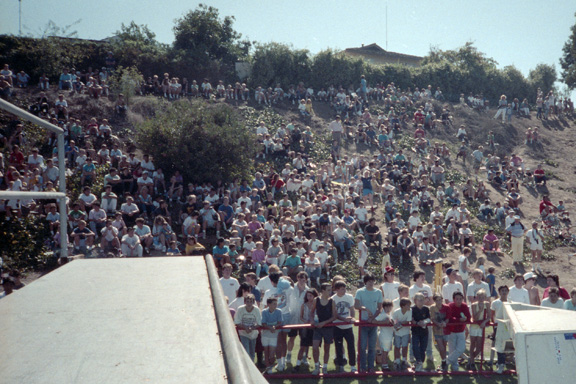
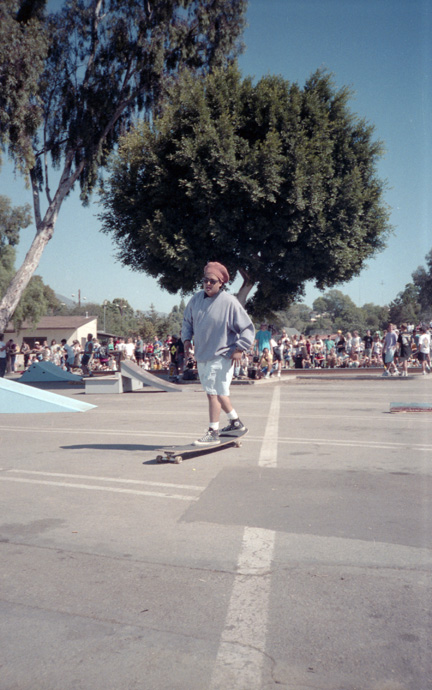
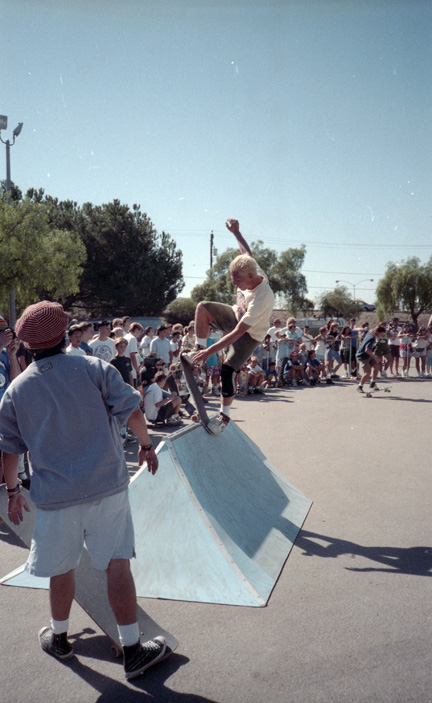
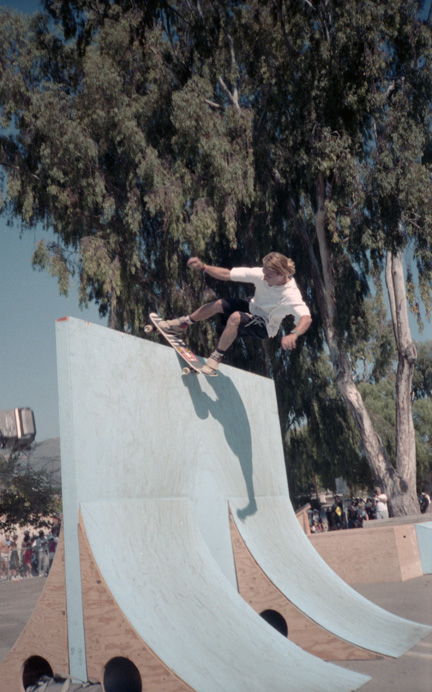
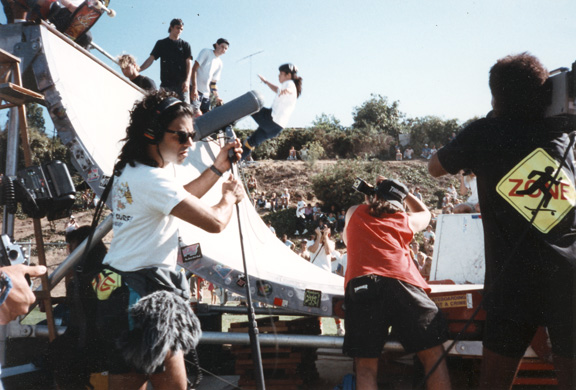
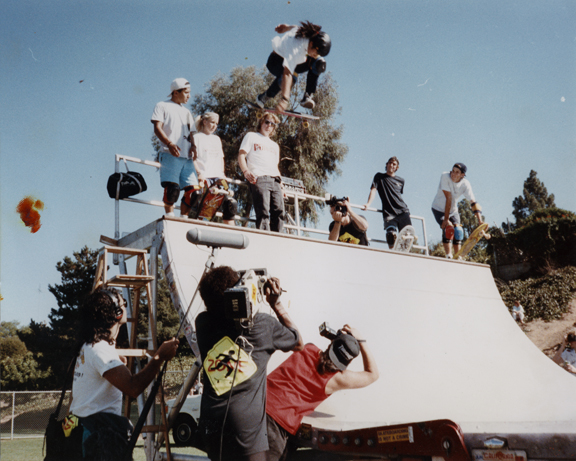

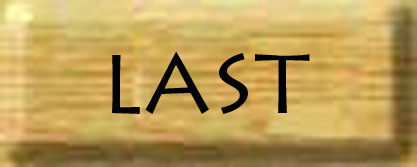

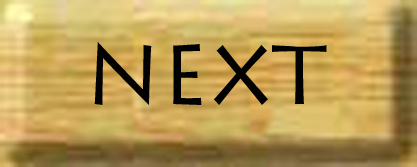

© 2017. 2022 John Oliver
All Rights Reserved
mail@unclejohnsweb.com

The powers that be at Powell; George, Chris and Fitz probably, came up with the idea of a "Skate Zone" Demo. By then we had quite a bit of collective experience putting on public shows across the country with our mobile ramp as the centerpiece. Invariably, in every town we appeared on some big parking lot, the locals would transport their portable launch ramps down to the scene and a momentary skatepark would exist for that one afternoon.
Here in our own hometown, the Company could provide our own collection of skating elements, and the R&D/Facilities crew got to work creating them. This is the point where our rampbuilding took off. Up to that point, our work on the Crossbones Ramp had been mostly a volunteer effort. With Powell putting on its own local event, all the resources of Facilities and R&D were used on company time. Mike Frazier's welding skills gave us perfect coping; the company paid for all the materials, and we had a full gallery of pieces to build.
MacKenzie Park sits up against a hillside on upper State Street. It was part of the site of a WWII temporary hospital they made into a park when I was in high school. It has a big grassy field, a couple of baseball diamonds, basketball courts and a big parking lot surrounding the Army Reserve Recruiting Station on the corner. Everything we needed for a deluxe event.
We set up the mobile halfpipe on the lawn. In the paved basketball courts we scattered an array of launch ramps and sections of the railslide from the Ver-Cal event, and a freestanding two-sided wall ride that turned out to be the most popular element. A steep hillside on the south edge of the park made for excellent viewing of the whole spectacle. Stars of the Southern California skate scene who were pros for other companies showed up to support the cause; including skateboarding' s own DJ, Skatemaster Tate.
Thousands of skaters and curious pedestrians spent the whole afternoon there, enjoying the free form spectacle. By early evening we had to remove all the skating elements.
With the temporary skatepark torn down and hauled away, many skaters moved on to the nearby Laredo Plaza parking lot and did cause some problems. That's just the point, without a zone for it; skaters practice their sport on the world at large.
The MacKenzie Park SkateZone was a big success; proving skateboarding events are not anarchists' riots, just young athletes having some fun. The city fathers were starting to see the light. Fitzpatrick was making sure that in the halls of government, and in municipal parks departments statewide nobody would miss the calculation: a basketball court, for example, might entertain a few people, maybe 10 at once, but most of the time there' s nobody there. A baseball diamond, with all its need for maintenance and grass mowing, likewise sits most of the time unused. But a skatepark is used almost constantly.



















All Rights Reserved
mail@unclejohnsweb.com
